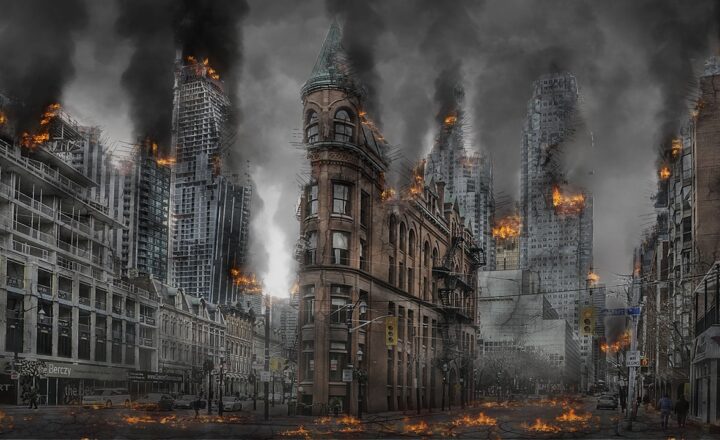From Cannons to Cruise Missiles: How Artillery Changed Warfare Forever
November 11, 2024

Artillery has long been a cornerstone of military power, evolving from simple cannons in ancient times to the sophisticated cruise missiles of today. This evolution reflects not only advancements in technology but also significant changes in tactics, strategy, and the nature of warfare itself. In this article, we will explore the transformative role artillery has played in various conflicts throughout history and how it continues to shape the modern battlefield.
1. The Birth of Artillery: Cannons in the Middle Ages
The development of gunpowder in the 9th century paved the way for the creation of artillery as we know it today. Early cannons, often constructed from metal or wood, were first used in Chinese warfare, but their impact was felt across the globe.
During the Middle Ages, cannons transformed castle sieges. Instead of relying solely on battering rams and ladders, armies could now bombard walls from a distance, creating new tactics in siege warfare. The Battle of Crécy (1346) showcased the strengths of cannon-toting forces, leading to a shift in military focus towards firearms.
Despite their effectiveness, early cannons faced limitations, including slow reloading times and a lack of precision. Yet, their psychological impact was undeniable — the thunderous booms of artillery instilled fear in opponents.
2. The Evolution of Artillery in the 17th and 18th Centuries
The 17th century saw a significant evolution in artillery design, with the introduction of more accurate and faster-loading pieces. The cannons became a staple of both land and naval warfare, with improvements leading to the invention of more advanced artillery systems such as howitzers and mortars.
The Napoleonic Wars marked a pivotal moment in artillery usage. Napoleon Bonaparte realized the importance of mobile artillery in conjunction with infantry and cavalry, leading to tactics that integrated different units for maximum effectiveness. This period established artillery as an indispensable part of military strategy.
The Battle of Austerlitz in 1805 highlighted Napoleon’s innovative use of artillery, demonstrating how a well-placed cannon could change the tide of battle. The precision and speed at which artillery could be deployed redefined engagements and strategies on the battlefield.
3. The Industrial Revolution: Big Guns and World Wars
The Industrial Revolution introduced technological advancements that revolutionized the construction of artillery. The introduction of rifled barrels increased accuracy and range significantly, while larger-caliber guns such as the British “Big Bertha” artillery were deployed during World War I.
World War I exemplified the devastating power of artillery, as heavy bombardments became crucial to both offense and defense. The trench warfare associated with the Great War showcased artillery’s ability to shape battlefields, leading to tactics such as creeping barrages and counter-battery fire.
The interwar period led to further advancements, setting the stage for World War II. Mobile artillery pieces, like the German “88 mm” gun, demonstrated the versatility of artillery on the battlefield, capable of being employed against infantry, armor, and aircraft alike.
4. The Cold War and Beyond: Precision-guided Munitions
The Cold War era saw the development of nuclear artillery, but perhaps the most significant advancement during this time was the introduction of precision-guided munitions (PGMs). These artillery shells and missiles could be precisely targeted, minimizing collateral damage and increasing operational effectiveness.
The Gulf War in the 1990s showcased the effectiveness of PGMs in modern warfare. The famous “smart” bombs demonstrated how artillery could achieve high accuracy, drastically altering military strategy and tactics. The ability to strike targets with unprecedented precision shifted the paradigm of engagement and engagement rules in international warfare.
Today, artillery systems continue to evolve, with technologies such as drone-assisted targeting and advanced ballistic systems redefining how conflict is approached.
5. The Future of Artillery: From Autonomous Systems to Cyber Warfare
Looking ahead, the future of artillery is likely to be defined by advanced technologies, including artificial intelligence and robotics. Autonomous artillery systems may soon operate on the battlefield, capable of targeting and engaging threats without direct human intervention.
Additionally, as warfare becomes more hybrid, the integration of cyber warfare with traditional artillery systems may become crucial. Disrupting enemy communications can enhance the effectiveness of artillery strikes, further changing the landscape of how conflicts are waged.
While the nature of warfare continues to evolve, the role of artillery remains paramount. As we advance into an uncertain future, artillery will undoubtedly adapt, ensuring its place in military strategy.
Conclusion
From the simple cannons of the Middle Ages to the sophisticated precision-guided munitions of today, artillery has played a pivotal role in shaping the battlefield across centuries. Each advancement not only reflects technological progress but also transforms military strategy and tactics. As we look to the future, it is clear that artillery will continue to evolve, maintaining its relevance in the complex landscape of modern warfare.
To understand today’s conflicts, we must appreciate the historical impact and ongoing transformation of artillery, a weapon that has changed the face of warfare forever.






